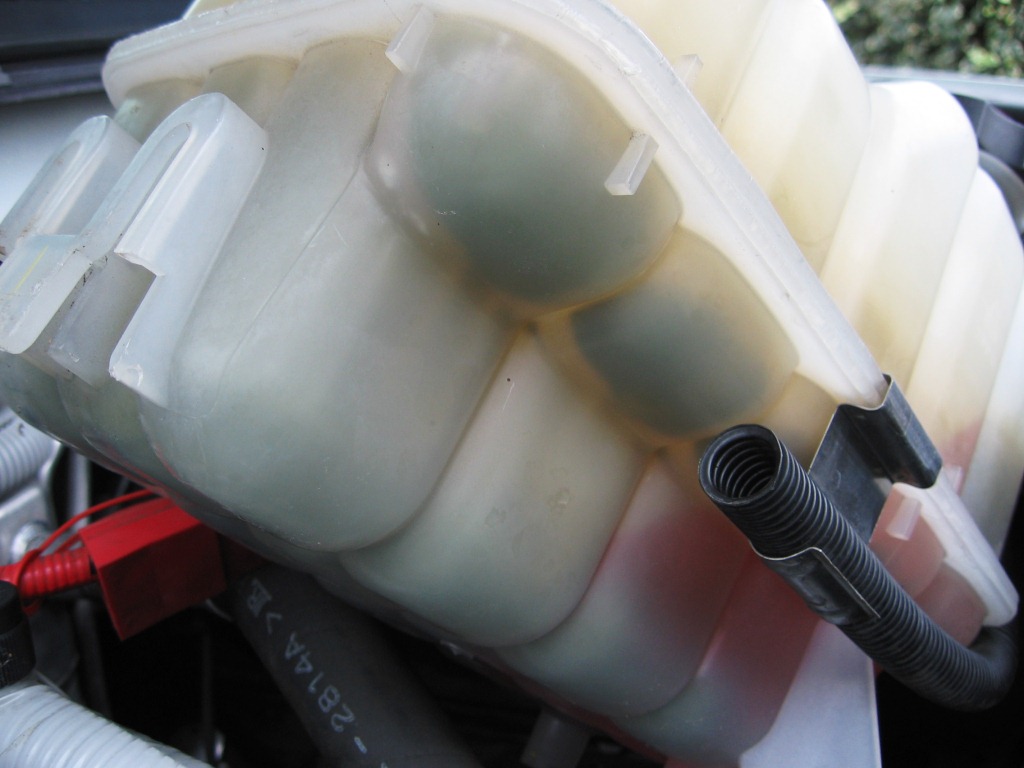What is that dark discolored deposit inside the coolant recovery reservoir/tank?
I've wondered for years. The deposit appears granular in nature, and more toward the upper half of the degas bottle, aka coolant recovery tank, aka reservoir bottle. (all terms used for key word searches).
The best answer I've come up with so far is a technical service bulletin from GM that stated that the GM factory used to install stop leak tablets in the cooling system at the time of manufacture. The residue on the upper part of the otherwise translucent coolant reservoir is a byproduct of this stop leak tablet dissolving.
While initially, the deposits were isolated to the top half of the recovery tank, I now find that the entire tank interior is becoming discolored.
Coolant is otherwise very pink. The discoloration is on the inside of the plastic bottle, but not in the coolant itself.
2005 model year with 62K miles.
Do you know more about this discoloration?
I've wondered for years. The deposit appears granular in nature, and more toward the upper half of the degas bottle, aka coolant recovery tank, aka reservoir bottle. (all terms used for key word searches).
The best answer I've come up with so far is a technical service bulletin from GM that stated that the GM factory used to install stop leak tablets in the cooling system at the time of manufacture. The residue on the upper part of the otherwise translucent coolant reservoir is a byproduct of this stop leak tablet dissolving.
While initially, the deposits were isolated to the top half of the recovery tank, I now find that the entire tank interior is becoming discolored.
Coolant is otherwise very pink. The discoloration is on the inside of the plastic bottle, but not in the coolant itself.
2005 model year with 62K miles.
Do you know more about this discoloration?





 ........my first guess would simply be crap from the engine casting process that was hung up in some some spot in the water gallery or heater casing and not completely flushed prior to the build. If an escalating condition could even be deterioration of the water hoses.
........my first guess would simply be crap from the engine casting process that was hung up in some some spot in the water gallery or heater casing and not completely flushed prior to the build. If an escalating condition could even be deterioration of the water hoses.